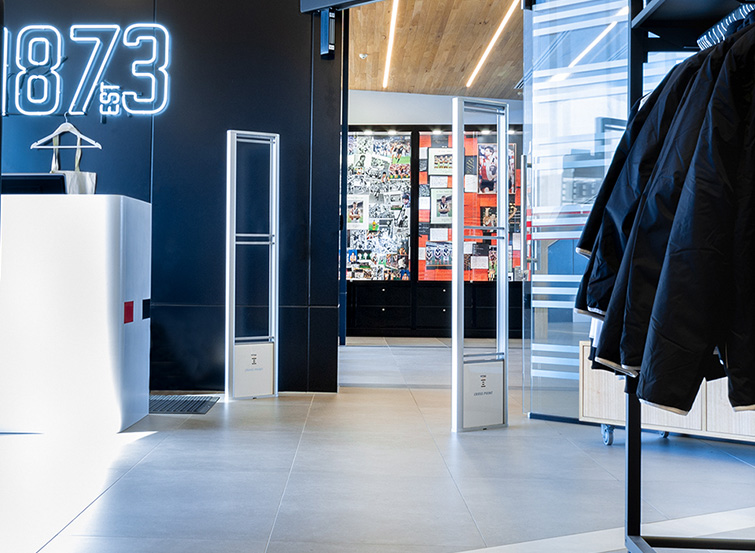Retail Security 101

I’m a smaller retailer, what can I do to stop shoplifters??
This question often arises AFTER a retailer has experienced a sudden or major stock loss triggering a desire to fight back against theft.
To smaller retailers, these losses are more than numbers on an annual report, they represent identifiable items that cost real money. For larger retailers it may be the stock variances that appear when you finally get time to count stock – missing dollars that finally add up!
Better to take steps before the losses occur.
How can you take effective action to reduce shop theft and inventory losses? It’s almost impossible to totally stop Shoplifting, but it is certainly possible to take steps to minimise your losses.
Know your losses
Which implies knowing your inventory. Keeping track of your stock is vital in knowing what you are losing and how much you can invest to minimise losses.

-
- Internal procedures – accurate receipting of inwards goods and checking you are getting what you pay for
- Effective POS Systems and accurate stock labelling
- Regular stock checks to identify variances before they get out of hand
Quantify your losses
How much are they? Knowing how much you are losing guides you as to how much you can invest to reduce your losses…
Know your options
As a smaller retailer you may lack the resources enjoyed by the majors! However, there is a wealth of information available from independent sources (online) and suppliers to help you. Loss prevention for retailers involves options that can cost money while others just take time and effort. Let’s look at some of the basics.
Deterrence – make the thieves go somewhere else!

- Staff Training – don’t ignore customers, be attentive and observant
- Store Layout and design – avoid creating blind spots – use mirrors if needed, these are low cost and very visible
- Public view monitors at the store entry – modern cameras can output directly to a monitor without an expensive recorder
- Visible theft prevention technology – cameras, EAS Systems, Tags – all will make a potential thief think twice
Detection – your losses are more substantial
Say over $10,000 per year? Using tested but simple technology should pay for itself quickly, typically cutting external theft by more than 50%.
CCTV Systems
- High-resolution camera systems are cost effective and great for evidence after an event. Including a public view monitor adds deterrence. Make sure you specify enough storage to capture enough footage – check the resolution and frame rates being used to make sure they are sufficient but not excessive for your situation. CCTV has additional value monitoring store activity remotely and can be scaled as needed.
- Updating older CCTV Systems has become easier with Hybrid systems allowing old cameras and cabling to be combined with new high-definition cameras and recorders. Prices have also fallen in recent years – but make sure you are buying reputable hardware from suppliers who can provide support over time.
- Learn how to use your CCTV System – know how to retrieve and save files for viewing offline or for providing to Police in the event of an incident.
Doorway Security Systems
known as Electronic Article Surveillance (EAS) these systems come in different formats and frequencies allowing you to tailor a system to deter and detect theft that meet your design criteria – and your budget.

Featured product: Fortus AM40 Security System
- Pedestals – provide a strong visual deterrent and good detection with options to suit narrow or wide doorways. May need floor preparation but can often be added to an existing store. Best value. Wide range of Tags and Labels to work with different retail categories.
- Hidden Systems – aesthetically appealing but rely on the Tags for deterrent effect. Underfloor and Doorway Loop systems are best installed during the construction of a new store or renovation. Can be expensive and detection relies on careful specification. Best used with reusable Tags rather than labels that have lower detection levels.
- RFID Systems – Overhead or hidden RFID Systems use “intelligent Tags or Labels” to secure products and use antennas that hang over the doorway or within walls. Can provide inventory management options helping to improve stock counting and management. Tags are more expensive and can be affected by body shielding so installations must be carefully planned. Scalable but expensive for wider doorways.
- Security Tags and Labels – while normally part of a doorway security system, the selection of tags or labels is critical to the success of a system. Matching the size of tags and labels to the system ensures the best detection performance and choosing the right tags or labels for your product will often dictate the type of system you need.
EAS Systems have also fallen in price over time so can be a cost-effective solution for many businesses. They can include customer counting, metal detection and remote service options. While the initial investment will depend on the size of doors, design of the system and the number of items you are protecting, EAS continues to be installed by leading retailers around the world indicating that it is worth considering if you have high value, high-risk merchandise.
Concluding, smaller retailers can take steps to minimise losses from shop theft. Knowing the extent of your losses is the first step. Then you can weigh up the costs and benefits of using available technology to fight back against shop theft. Investments often have tax benefits and can be financed in many cases. If your losses justify the investment, tools do exist to stop shoplifters!
Blog Author
 Mike Champness
Mike Champness
Vitag Major Accounts and Projects Manager
e: [email protected]
View our range of retail security solutions here, or contact us for more information.